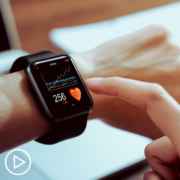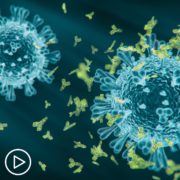Are MPN Risks and Outcomes Impacted by Race or Ethnicity?
Are MPN Risks and Outcomes Impacted by Race or Ethnicity? from Patient Empowerment Network on Vimeo.
Are myeloproliferative neoplasm (MPN) risks and outcomes impacted by patient race or ethnicity? Expert Dr. Idoroenyi Amanam from City of Hope explains common MPN symptoms, potential risks and outcomes, and patient advice for optimal care.
[ACT]IVATION TIP:
“…if you have stroke, heart attack, blood clots, abnormal counts, please follow up with your doctor and ensure that you get referred to the appropriate specialist to help assist in managing your complications.”
Related Resources:

Myeloproliferative Neoplasm Basics for Newly Diagnosed Patients |

What Does the Future of Myeloproliferative Neoplasm Care Look Like? |

MPN-Related Complications | Are BIPOC Patients at Higher Risk? |
Transcript:
Lisa Hatfield:
Dr. Amanam, how does race impact clinical MPN outcomes or complications? And are certain populations more susceptible to getting MPNs?
Dr. Indoroenyi Amanam:
Yeah, it’s a great question. I think, because of the fact that symptoms are not as clearly related to MPNs as opposed to some other diseases. So the major presenting symptoms for MPNs are related to high blood pressure or some other vascular abnormality, including strokes or blood clots. It takes a little work to diagnose MPN patients, and half of them are asymptomatic. And if you actually look at diagnosis rates, they’re one to three cases per 100,000 per year. And so this is very rare, and I think that we don’t have enough data to really understand if some groups are at higher risk to develop MPNs than others.
We have looked at incidences of thrombotic events in patients who have MPNs, and we tried to see if there was a difference between racial groups, and we didn’t. We did see that if you’re younger, you do have a higher risk of thrombosis over time, but there was no difference for if you were white, Hispanic, or African American.
What we did find though, in a small single center study is that if you are non-white, there’s a higher risk of death over time. And I think we still need a lot of work to get a better understanding as why that’s the case. So far we don’t have a clear signal for that, but I do think, in the same…the story that we understand for healthcare in general, there are some differences in terms of access to care, the quality of care that’s delivered in, you can guess that possibly that’s one of the reasons why that that affects African Americans and Hispanics disproportionately in this setting as well.
So my activation tip for this question would be if you have stroke, heart attack, blood clots, abnormal counts, please follow up with your doctor and ensure that you get referred to the appropriate specialist to help assist in managing your complications.
Share Your Feedback
Create your own user feedback survey


















